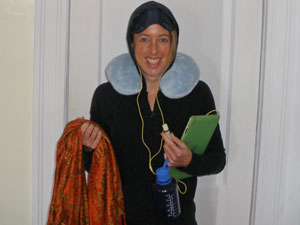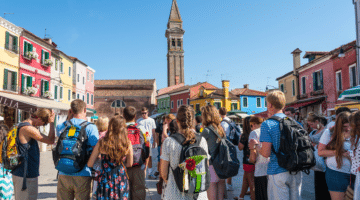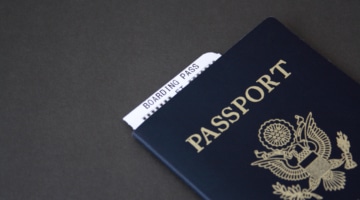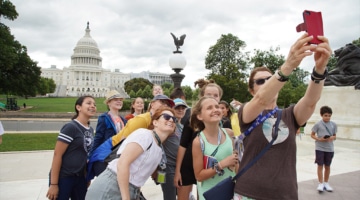Travel Tips for Surviving a Long Flight
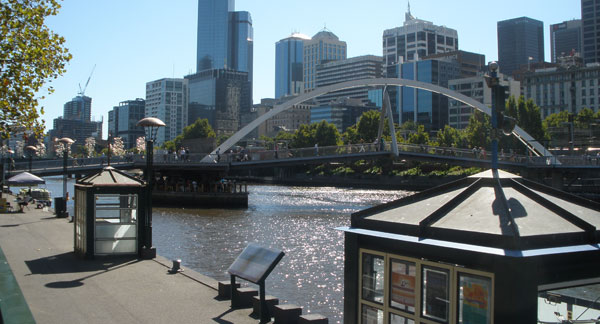
These were our travel times flying over:
Boston to Los Angeles, 6hrs, 30min.
LA to Melbourne, 15hrs, 50min.
Total = 22hrs, 20min.
With the time change, we departed Boston at 5:45pm on Saturday and arrived in Melbourne at 10:20am on Monday. Sunday disappeared into the vortex of the International Dateline!
And flying home:
Sydney to Dallas/Fort Worth, 15hrs, 5min.
Dallas to Boston, 3hrs, 35min.
Total = 18 hrs, 40min.
With the time change, we departed Sydney at 2:40pm on Saturday, traveled back in time to arrive in Dallas at 1:45pm on Saturday and eventually reached Boston at 8:15pm that same night. With the layover, it was over 20hrs of travel time in a mere 7.5hr day!
From the East Coast, Australia is one of the furthest trips you can take. So as you might imagine, I’ve been thinking about this a lot. Both planning for how I was going to forestall the leg cramps and then waiting to see how badly the jet lag kicked in. These are my top-of-mind tips for helping your body survive during and adjust after a long flight as easily as possible:
- Go into your trip well-rested. Exhausting yourself in the week leading up to departure with the thinking that this will help you fall asleep on the plane is a recipe for disaster. Remember that whatever sleep you do squeeze in en-route isn’t exactly deep, restful REM. Bank up some snooze time in your comfy bed at home.
- Ask about meals at check in or from the gate agents. Knowing when (or if) the plane intends to serve food helps you know whether to eat a snack at the airport, bring something on board with you or when you should plan to sleep so you don’t miss the meal or get disturbed.
- Drink a lot of water. Bring an empty reusable bottle to fill at a water fountain once you’re past security. Or buy a bottle near the gate and refill it on the plane and during your trip. Hydrate or pay the price! (in the form of headaches, chapped lips, cramped muscles, flagging energy, etc.)
- Pursuant to the above, of course, are airplane bathroom trips occurring at an annoyingly frequent rate. First, go into the trip already well hydrated, starting a few days before your departure. Second, I try to drink a lot of water early in the flight when I know I’m planning to be awake, eat, read and watch movies. Then I taper off as I’m getting ready to try and rest. Because nothing is worse than finally coaxing yourself asleep only to be reawakened by an urgent need to go.
- Wear layers of comfy, stretchy clothes. My standard uniform consists of cropped stretchy black pants, socks or slippers, t-shirt, lightweight zip-up hoodie, lightweight jacket with zipper pockets and a pashmina. As the plane fluctuates from hot (sitting at the gate as people board) to shiver-inducing (when the cabin lights go down for sleeping), those pieces allow for movement, go on and off easily and double as mini-blankets or roll up into pillows. And I always fly with my hoodie up!
- Seize opportunities for movement. Before flights and during layovers, I rarely sit by the gate. I get through security and then browse every store despite no intention of purchasing or just stroll. I’ve seen most of the terminals I’ve flown from end-to-end no matter where my gate fell. On the plane, stretch while you wait for a bathroom to open up. Often there are water dispensers near the service area and refilling your bottle is a good excuse to stand and walk the aisle. When your neighbors vacate their seats, twist your limbs up or around like pretzels and stretch them out to keep the blood flowing.
- Be judicious about what you stash under the seat in front of you to maximize room for your legs to stretch out. I bring a small bag-inside-my-bag. That way my full carry-on backpack can go up in the overhead bin and just a few things that I’ll know I’ll need frequent access to are under the seat.
- Take advantage of the in-flight movies, download seasons of a TV show you’ve been dying to see, get engrossed in a thrilling novel—anything to make you forget how brutally long you’ve been sitting there. I had several episodes left of Downton Abbey season one (I’m a newbie) on my iPad and the hours just flew by.
- If you’re traveling with a high school student group, friends or family, you can plan ahead and come up with printed sheets for everyone containing an easy group challenge or activity. For your educational student trip, try trivia about your destination or have the students list the three things they are most excited to see/do (departing flight) and then the three things that made the biggest impression (returning flight) and compare/discuss everyone’s answers when you get back to school.
- Bring your own headphones. Ones that you know you can wear for
hours on end. I like to have both a set of noise-cancelling ones and easy, comfortable ear buds. - An eye mask and neck pillow (inflatable if you’re tight on space) will help you get some rest. Some people also like ear plugs. I usually just use my headphones and some soothing tunes.
- Give your immune system a boost before you fly by eating lots of foods rich in vitamin C. On the plane and in airports, wash your hands frequently. Just like any other situation that brings a lot of people together, germs can be easily shared and no one wants to be sick on tour.
- Finally, when you arrive, jump right in to the local schedule. We arrived at my brother’s Melbourne apartment around noon and, after a quick refresh/clothing change, headed right out for some lunch (with cappuccinos!) and a walking tour along the riverfront. Bedtime was early that night, but it helped us adjust quickly and not get slowed down by jet lag. Here are more tips for maximizing your educational student trip’s arrival day.
